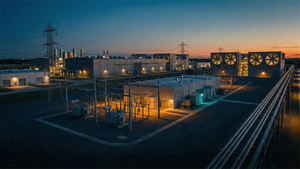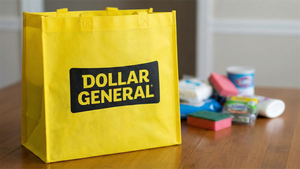DENVER, Aug. 28, 2025 (GLOBE NEWSWIRE) -- The U.S. dairy industry is facing a potential shortage of its most important resource – milk cows. The number of replacement heifers available to enter the dairy herd as milk producing cows has already fallen to a 20-year low. Based on new CoBank research, replacements could fall even further over the next two years before a recovery begins in 2027. These declining heifer inventories could limit growth in the milk supply, a looming concern for dairy processors with expansion plans underway. The U.S. is currently experiencing an historic $10 billion investment in new dairy processing facilities expected to come online through 2027.
The decline in dairy heifers over the last several years is closely tied to beef and dairy market dynamics. Tight cattle supplies and record high prices for beef calves prompted many dairy farmers to produce more calves destined for beef feedlots and fewer to milk barns. At the onset of this trend, raising dairy heifers to enter the milk cow herd was a money-losing proposition due to extremely low heifer values and high rearing costs. While the economics have shifted and the shortage of replacement dairy heifers has sent values soaring, replenishing the pipeline of heifers available to enter the milking herd is a three-plus year proposition.
According to a new report from CoBank’s Knowledge Exchange, the national dairy heifer shortage could persist and grow deeper in the next two years. Based on CoBank’s predictive modeling, heifer inventories will shrink by an estimated 800,000 head over the next two years before beginning to rebound in 2027. In the meantime, dairy heifer prices have reached record highs and could climb well above $3,000 per head.
“The U.S. dairy industry stands at a unique inflection point,” said Corey Geiger, lead dairy economist with CoBank. “Beef sales are contributing a larger share of dairy farm profitability with each passing year and the market for beef-on-dairy calves shows no signs of slowing down. In order to maintain sufficient dairy cow numbers and milk production in the near term, dairy farmers will need to put the brakes on dairy cow culling. And that could be difficult given how much they’ve already pulled back over the past two years.”
The economic incentive prompting dairy farmers to produce calves destined for the beef supply stems from the historic contraction in the U.S. cattle supply, which currently stands at a 75-year low. Limited beef supply and strong consumer demand have driven beef prices to record highs.
Most dairy farmers breed their cows via artificial insemination, which gives them the option of using beef semen to produce calves well-suited for beef production. Based on semen sales data, many dairy farmers did just that. Total U.S. beef semen sales nearly tripled from 2.5 million to 7.2 million units from 2017 to 2020. While a demographic breakdown of semen sales at that time was not available, the upward shift primarily came from dairy farmers, not beef cattle ranchers who largely rely on natural service bulls.
In 2020, the National Association of Animal Breeders began tracking beef semen sales to dairy farmers. Those numbers tell a more dramatic story. Of the 7.2 million units of beef semen sold that year, 5 million units were purchased by dairy farmers. That ratio eventually climbed to 7.9 million of the 9.7 million units sold in 2024. Their skyrocketing purchases of beef semen reflect the extent to which dairy farmers chose to produce calves destined for beef production rather than dairy herds.
As the supply of dairy heifers has dwindled and their value has climbed, dairy farmers are culling fewer cows to keep the milk flowing. They have also made significant changes in semen purchases to help remedy the shortage of replacement heifers by purchasing more gender-sorted units to create more dairy heifer calves. But rebuilding the supply will take time. It typically takes two years before a newborn dairy heifer calf is available to enter the milking herd.
Geiger said the decline in heifer inventories raises the question of whether there will be enough milk cows to supply the additional demand created by new dairy processing facilities. “The short answer is that it will be tight. Those dairy plants will require more annual milk and component production, largely butterfat and protein. And it will take many more dairy heifer calves in future years to bring the national herd back to historic levels.”
Watch a video synopsis and read the report, Dairy Heifer Inventories to Shrink Further Before Rebounding in 2027.
About CoBank
CoBank is a cooperative bank serving vital industries across rural America. The bank provides loans, leases, export financing and other financial services to agribusinesses and rural power, water and communications providers in all 50 states. The bank also provides wholesale loans and other financial services to affiliated Farm Credit associations serving more than 78,000 farmers, ranchers and other rural borrowers in 23 states around the country. CoBank is a member of the Farm Credit System, a nationwide network of banks and retail lending associations chartered to support the borrowing needs of U.S. agriculture, rural infrastructure and rural communities. Headquartered outside Denver, Colorado, CoBank serves customers from regional banking centers across the U.S. and also maintains an international representative office in Singapore.

Corporate Communications CoBank 800-542-8072 news@cobank.com





